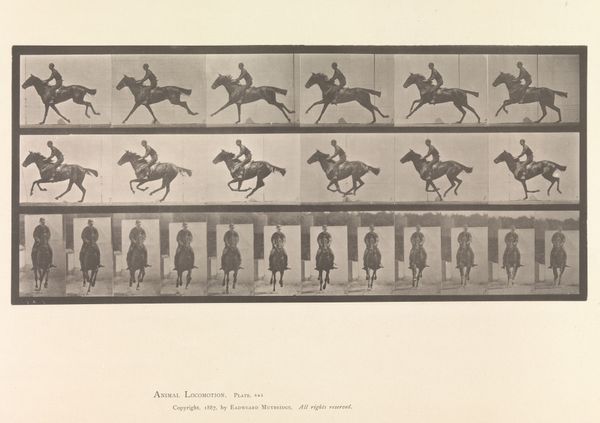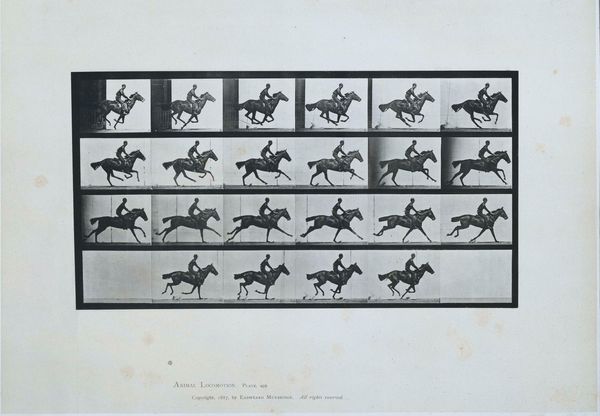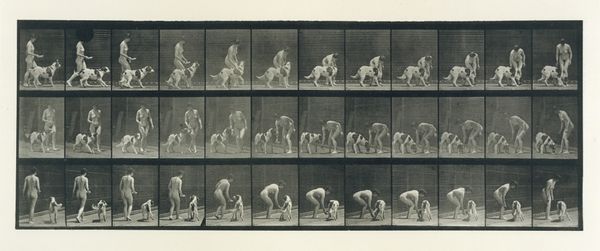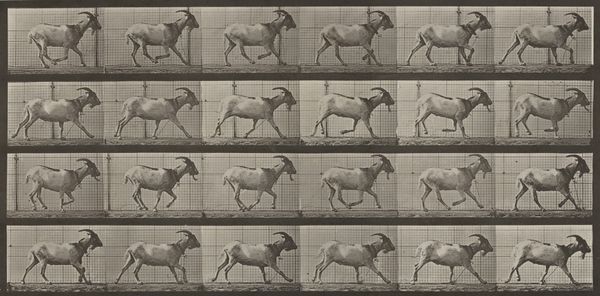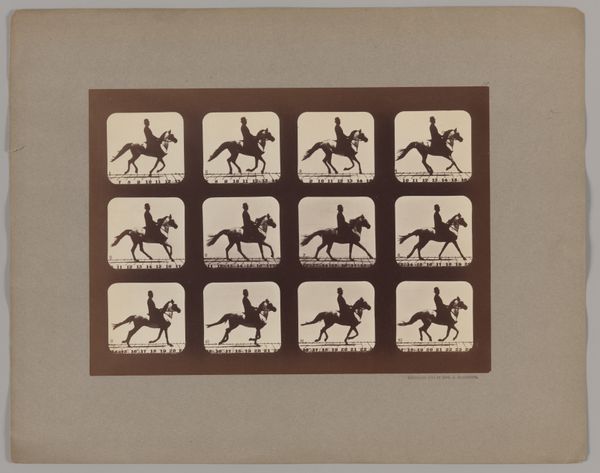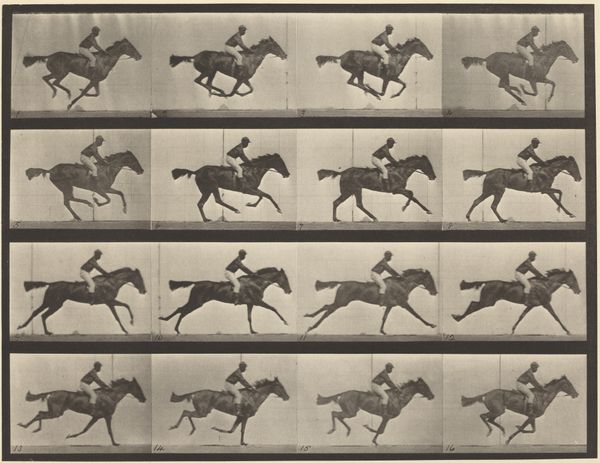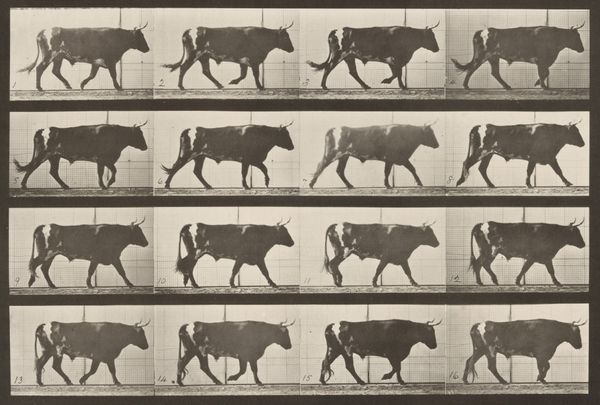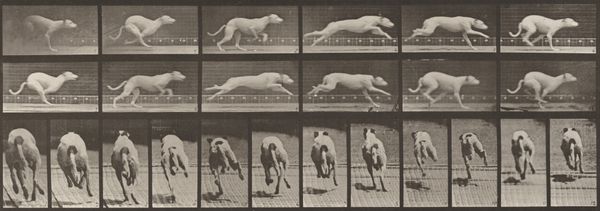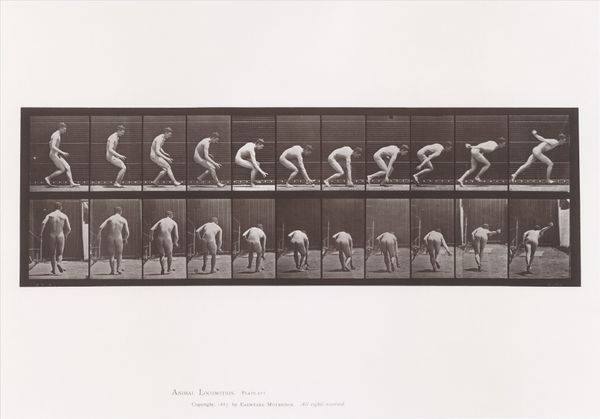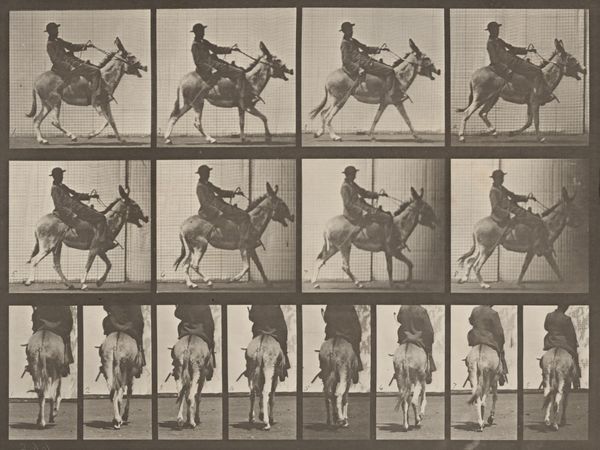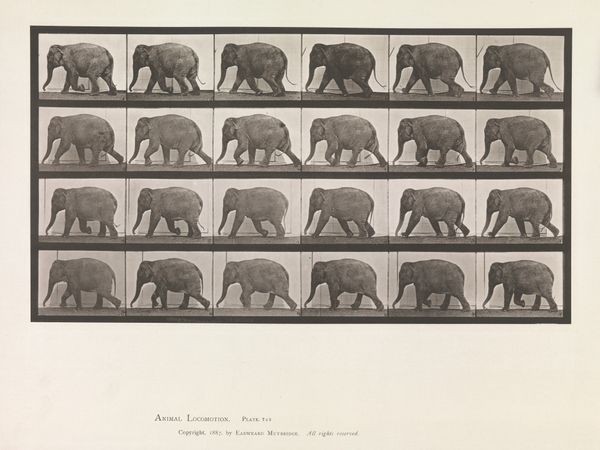
Animal Locomotion. An Electro-Photographic Investigation of Consecutive Phases of Animal Movements. Commenced 1872 - Completed 1885. Volume IX, Horses 1887
0:00
0:00
photography, gelatin-silver-print
#
portrait
#
kinetic-art
#
impressionism
#
book
#
photography
#
horse
#
gelatin-silver-print
#
pre-raphaelites
#
realism
Copyright: Public Domain
Editor: Here we have Eadweard Muybridge’s *Animal Locomotion,* specifically Volume IX, Horses, from 1887, using gelatin silver prints. It's fascinating to see the stages of movement captured so scientifically! How would you interpret this work, thinking about its broader significance? Curator: This piece isn't just about depicting a horse running. Think about the late 19th century; the question of accurate representation was raging, especially regarding motion. Muybridge's work intersected with debates around scientific objectivity, the limitations of human perception, and emerging technologies. How does this series challenge our assumptions about seeing? Editor: Well, it definitely breaks down the action into distinct moments, proving, for example, that all four hooves leave the ground at once – something the naked eye can’t perceive. But beyond that, what do you think Muybridge was trying to say about the horse itself? Curator: Consider the power dynamics inherent in observation and control. Muybridge's project, while seemingly objective, raises questions about how we categorize and dominate the natural world. How might ideas about gender, class and scientific progress influenced how and why people approached nature then? What does "progress" mean when we talk about technological representation? Editor: So, you're saying it’s less about celebrating the horse's beauty and more about a specific kind of gaze… almost a Victorian desire to dissect and understand through a very particular lens? Curator: Precisely. And let's not forget how these images were later used to inform artistic depictions. Artists used his photos as reference for realistic depiction in painting and sculpture. These "objective" images fed back into and shaped the imaginary realm. Editor: I hadn’t considered that cycle. I now see it as a piece deeply embedded in the social and technological anxieties of its time. Curator: Exactly. By situating it within the matrix of power, science and representation, we reveal how even seemingly neutral images can carry significant ideological weight.
Comments
No comments
Be the first to comment and join the conversation on the ultimate creative platform.
